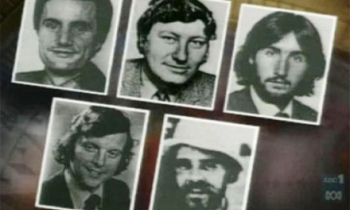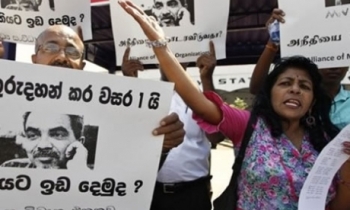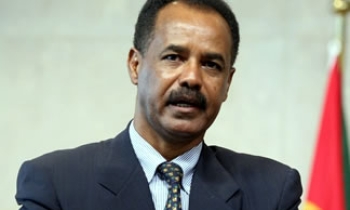Ever since newspapers came in vogue under British rule, the media has played an important role in Indian affairs. The Bombay Chronicle, the Free Press Journal, and many other newspapers and magazines were important elements in the movement for Indian independence. Gandhiji used the print medium to convey his views on important matters of the day as well as on many others in which he took interest. These included issues like health, religion and untouchability. Indian newspapers, even under the British, were able to mobilize public opinion and contributed to independence.
Till the Eighties, Indian media was staid and more in the ‘reporting’ mode than in that of ‘making news’. The opening of the Indian economy in 1991 brought a transformation. The most powerful force was the proliferation of television, with more entertainment, sports and news channels every year and separate channels in almost every Indian language. Television could afford large budgets and went all out to “breaking news”, to the extent of flogging every item mercilessly. This was epitomized by the images of NDTV’s senior anchor waiting outside the Hinduja hospital for over 24 hours in a row while reporting on Amitabh Bachchan’s surgery. Television stars are today as well-known to loyal viewers of their serials as film-stars, and earn huge sums. Successful competition for the viewer’s attention, as measured in TAM ratings, determines the earnings of the different channels from advertising revenues.
Entertainment channels have flourished. All create similar episodes of man-woman relationships. They attract large audiences among sedentary homemakers, teenagers and some men. Strangely, because the lives they depict are so alien to the real lives of the middle classes and the poor, especially in rural areas and small towns, that these serials are popular among all classes. ‘Reality’ shows with huge prizes took off after a major girls’ music group became nationally famous after winning a TV contest. Now there are dance contests, music contests and so on. There are also contests of ‘intelligence’ and ‘knowledge’, calling for the most limited amounts of each. However, they enable participation by audiences in the event or at least in the voting. There are the better ones like Kaun Banega Crorepati, that transformed the fortunes of Star network and Amitabh Bachchan, but they are rare. The explosion of telephones, and particularly cell phones, has made for a good and profitable marriage of telephony with television shows as millions vote for this or that musician or dancer.
Sports channels have also become hugely successful. Indian ‘couch potatoes’ have never had it so good. They can stay awake until early morning to watch world cup football played by great international teams, although India does not feature in it. Cricket, the pastime in which all Indians are experts but few are players, catches fire when India plays an international match in India or outside. Indian viewers are singlehandedly responsible for cricket becoming a major money-spinner for all cricketing nations. Unfortunately, Indian cricketers have been much more erratic than their fortunes as they vary so much in their playing from match to match. The sudden rise (and quick fall) of a highly photogenic and articulate young Indian woman tennis player on the international tennis circuit has also made tennis into a popular television sport. With the channels now attempting to make cricket into a sport for women viewers as well, those who do not play the game are now very knowledgeable about cricketers and their performances. The addition of the female audience surely increases advertising rates.
All these factors have now entered news programmes. News has become entertainment and channels vie with each other in making them “participatory”, even to the extent of asking viewers to vote for fuller coverage or repetition of a news item. Television news channels in India have also pioneered the ‘sting’ operation. This is a variant of “candid camera”. Respondents are interviewed and taped without their knowledge in these shows. Hidden cameras, monetary and even female bait, are the temptations offered to greedy defence officials, bureaucrats or politicians to catch them in the act of accepting the bait in return for government favours. The image of Bangaru Laxman, the BJP president, publicly accepting wads of cash, remains as an after-image in memory.
The television has now discovered a way to catch shoddy police investigation, corruption in the judiciary and the ability of the rich and powerful to escape the consequences of their crimes. That the channels boost viewership, earn more advertising revenues and score over competition is, of course, in their view, incidental. They see themselves as performing an important public service in a society in which the police are easily influenced, the judiciary is very slow and money and influence can change any evidence of crime. The Jessica Lal murder was a godsend that every channel has exploited. With a 24-hour coverage appealing to viewers to send in petitions, the media compelled a retrial. The executive and the judiciary have had to backtrack because of such pressure in a few other cases as well.
Much of our criminal investigation and at least some of the justice system suffers from poor registration of cases and FIRs, shoddy investigation, evidence-tampering for pecuniary gains, suborning of witnesses, and trials extending over years because of frequent adjournments. Wherever rich and powerful people are involved, and in small towns and rural areas, all this is much worse. What television has shown, starting with the Jessica Lal case, is its ability to provoke outrage and a rising of conscience among the educated. However, they have so far done this in very few and high-profile cases.
When television does get involved with the unglamorous poor, it appears to lose interest quickly. One recalls poor Gudiya (who ultimately died) badgered by the television interviewers to decide, on camera, which husband she had decided to live with — the first, who had disappeared as a prisoner of war, or the second, who was the father of her unborn baby. If the channels set up programmes to follow up criminal cases all over the country and regularly reported the findings, these might influence public opinion.
This is another cause for worry. The judiciary is also a part of the society. It does not escape media investigations and opinions. However, judges have to remain uninfluenced. Like lawyers, they have to presume that an accused is innocent till the evidence proves him guilty. A great criminal lawyer like Ram Jethmalani is duty-bound to cast doubts on the evidence before the court, even if it requires impugning the reputation of a dead woman. When the media turns upon Jethmalani for doing so, the very basis of our criminal justice system is subverted.
At the same time, there have been enough cases in Mumbai, Delhi and Bangalore in recent years (apart from others that did not receive the same publicity), in which justice appears to have not been done. When the police can falsify or hide evidence for a price, when judges give perverse verdicts, is it not necessary for the fourth arm of governance, the media, to act as watchdog and intervene? Perhaps it might be better if the electronic media, with the immediacy of its impact, as it reaches millions in their homes, were not to do it. The print media is better suited because it has to be more careful than is possible when a television interview is in progress.
The news media has tasted blood through its recent successes in criminal trials and their investigation. It will not give up this great audience attraction. Nor is it, perhaps in our conditions, desirable that it does. However, it must be subject to some rules of conduct. The Press Council might lay them down and some agency created to ensure compliance.
The author is former director-general, National Council for Applied Economic Research









